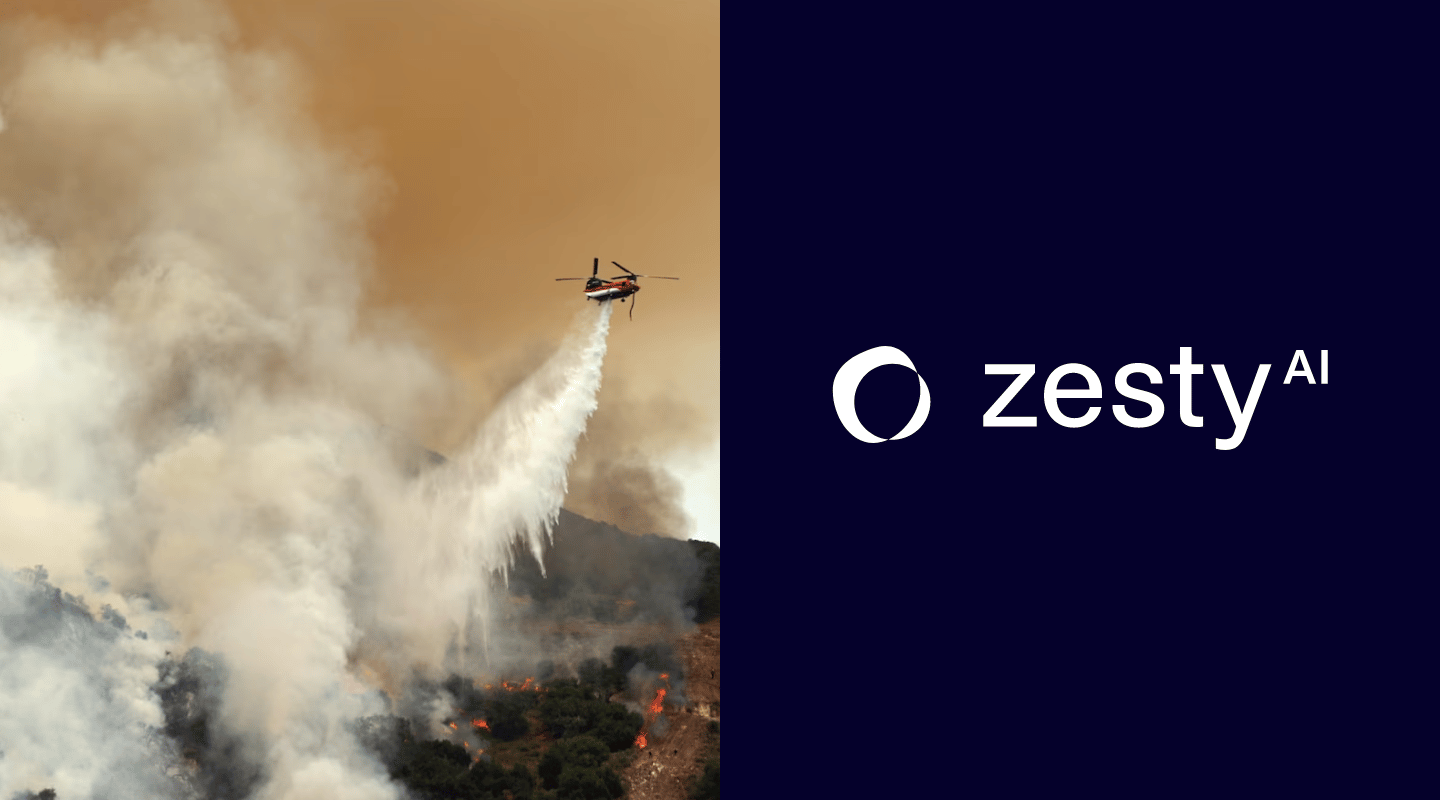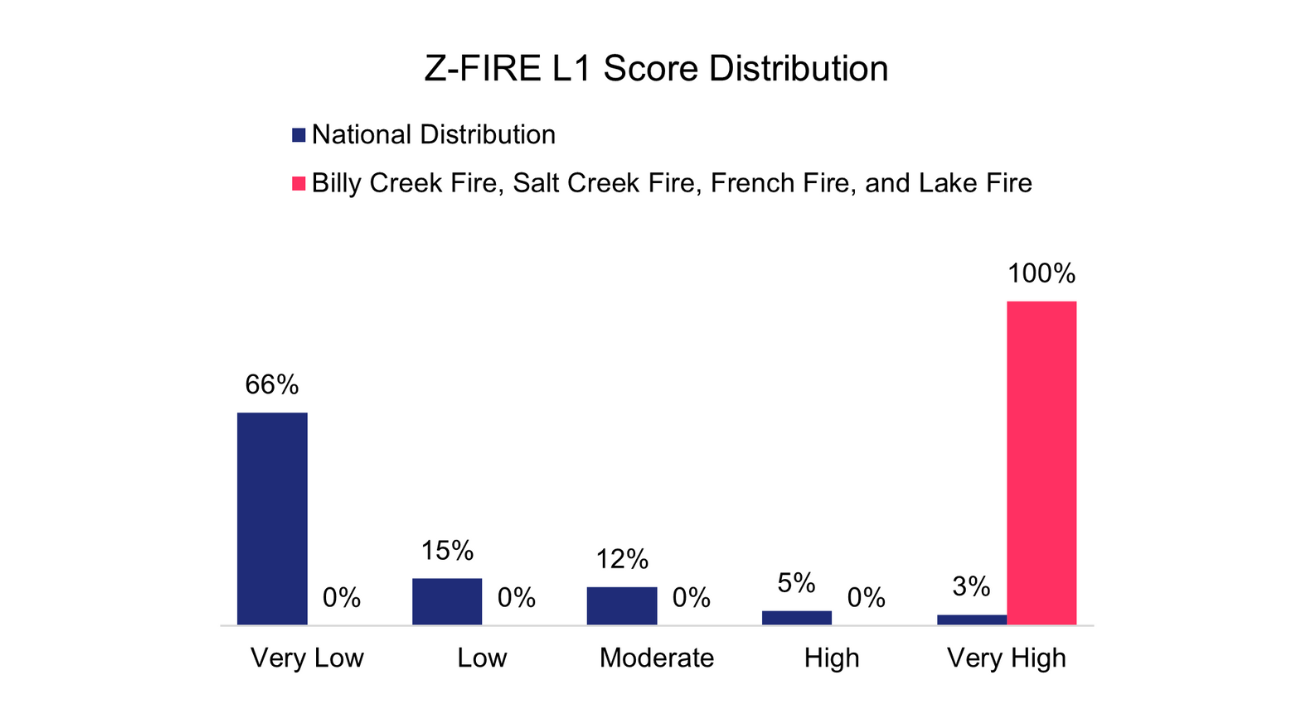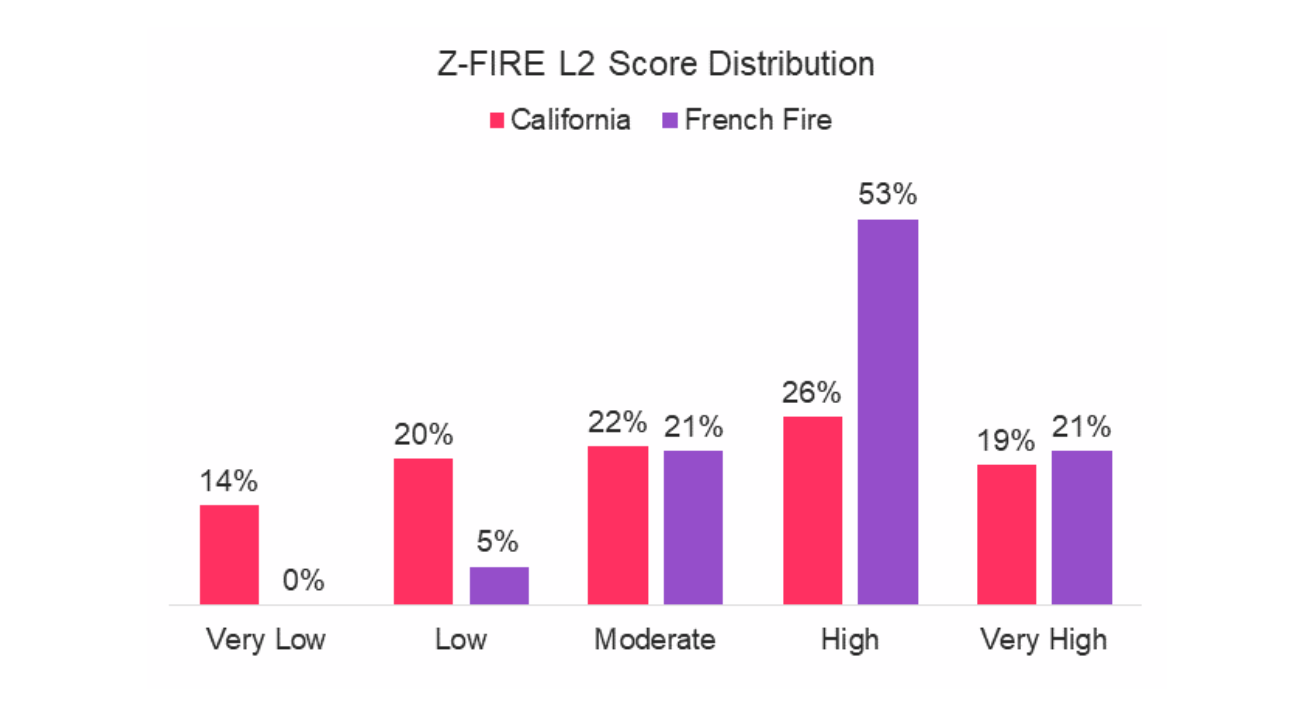Wildfire Season Update: July Blazes Highlight Risk and Mitigation Strategies
Z-FIRE analysis reveals vulnerability in wildfire zones – 100% of properties were at "Very High" risk


The current wildfire season underscores the importance of proactive risk management. With hot, dry conditions prevailing across the western US, July has seen numerous wildfires erupt, echoing our earlier predictions in our research, "Wildfire Season Overview: Not Just a California Problem."
The Current Wildfire Situation
Fortunately, most current incidents have been in remote areas that have a lower risk of loss of life and property. So far, it appears these fires have not been nearly as deadly as the South Fork Fire near Ruidoso, New Mexico, in June.
However, the destruction has still been sizeable. California’s largest wildfire so far this year, the Lake Fire near Santa Barbara, started on July 5th and has consumed an estimated 38,000 acres. It remains at only 34% contained, according to Cal Fire. The French Fire in Mariposa County, California, which ignited July 4th, shut down a major thoroughfare into Yosemite National Park, which has since been reopened. The fire has burned about 900 acres of grass, oak woodland, and brush; it left 4 people injured and destroyed 11 structures.
As we predicted, it’s not just a California problem. More than 750 firefighters are working to contain the Salt Creek Fire in Southwest Oregon, which ignited July 7th currently stands at over 4,000 acres consumed. It is 41% contained. And on the Washington/Idaho border, the Billy Creek Fire has reached 74% containment, having burned over 3,000 acres. Fortunately, most structures are a mile or more outside of the perimeter.

Predicting Wildfire Risk With Accuracy
ZestyAI's Z-FIRE wildfire model leverages AI and historical wildfire data to predict neighborhood and property-level wildfire risk across the US. This comprehensive model helps insurance companies understand loss risk and collaborate with policyholders on mitigation strategies.
There are three components of Z-FIRE:
- Level 1 Score (L1): Predicts the likelihood of a property being located within a wildfire perimeter over the next year.
- Level 2 Score (L2): The conditional probability of a property being destroyed if within a wildfire perimeter.
- Risk Factor Analysis: Provides insights into factors influencing L1 and L2 scores.
Z-FIRE Analysis of Recent Fires
We analyzed the fire perimeters of four major July wildfires: Billy Creek (Idaho), Salt Creek (Oregon), French (California), and Lake (California). This analysis will be revisited for a complete assessment in our annual Z-FIRE performance memo.
L1 Results: Very High Risk Confirmed
L1 scores identified "Very High" risk for all properties within the fire perimeters. Notably, 100% of properties within fire zones were classified as "Very High" risk, compared to just 3% nationally. This information is crucial for implementing appropriate mitigation strategies by insurance carriers and property owners.


L2 Reveals Elevated Risk to Structures

The Z-FIRE L2 score predicts the likelihood of each property being destroyed when included in a wildfire perimeter. We analyzed the properties within the French Fire perimeter for L2 risk, as this fire included the most structures at risk of being consumed (39).
We found that the properties within the French Fire perimeter were at higher risk than California at large. Approximately three-quarters of properties were classified as “High” or “Very High” risk for destruction versus less than half of properties across California. For the French Fire, about a quarter was within the “Low” or “Moderate” risk categories. Notably, no properties were considered “Very Low” risk, while 14% of all California properties are in this category.

This underscores the importance of property-specific characteristics and maintenance undertaken by property owners, like maintaining defensible space and upgrading building materials for fire resiliency. As we found in our research co-authored by the Insurance Institute for Business & Home Safety (IBHS), fuel reduction efforts, such as trimming nearby vegetation and maintaining a defensible space, can increase the likelihood of a structure surviving by 100%. While the entire French Fire area exhibited high wildfire risk, mitigation efforts undertaken by property owners can significantly reduce a structure's risk.
After the French Fire is fully contained, we’ll analyze L2 score performance in predicting which structures survived as part of our 2024 Z-FIRE performance memo.
A Stark Reminder: Mitigation is Critical
The science is clear: reducing fuel around a property significantly increases its chances of surviving a wildfire. Individual property owners and entire communities play a critical role in fire risk. To learn more, explore our full research report, "Wildfire Fuel Management and Risk Management," along with our 2024 Wildfire Season Overview.
Note: Wildfire situations are constantly evolving. The figures and analysis presented here may change as fire perimeters evolve and containment increases.









